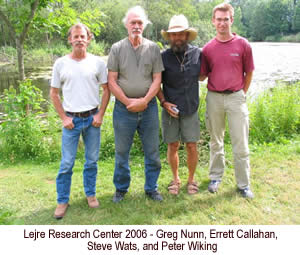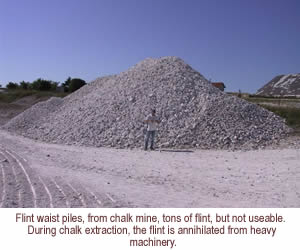Denmark 2006 |
 In July of 2006 I traveled to Denmark to revisit the Lejre research center. I met there with Dr. Errett Callahan to continue our work on a project concerning the production of the Type IV D late Neolithic Danish dagger. In addition, there were researchers conducting various other experiments concerning Lithic Technology. The group included researchers from Denmark, England, U.S.A. Sweden and Holland. The gathering was part of a Lithic Symposium sponsored by the Lejre Research center. In July of 2006 I traveled to Denmark to revisit the Lejre research center. I met there with Dr. Errett Callahan to continue our work on a project concerning the production of the Type IV D late Neolithic Danish dagger. In addition, there were researchers conducting various other experiments concerning Lithic Technology. The group included researchers from Denmark, England, U.S.A. Sweden and Holland. The gathering was part of a Lithic Symposium sponsored by the Lejre Research center.
With flint collecting complete, and several days left in my trip, Danish archaeologist Torben Sarauw kindly drove me to his house in Hobro where I stayed with he and his family for several days. Torben was researching several Type I Dagger collections that came from caches located within Neolithic flint mines. I had a chance to look at the caches and the area they were found. The daggers were of the ordinary Type IB and were percussion finished. Some of these small daggers, ranging up to 19 cm in length, had very well executed percussion flaking, i.e. with very wide deliberate flake removal that exhibited controlled over shots. Sorry, no pictures of these. I was too tired to take anymore photos. This was a sure sign I had become over-saturated with artifacts, and it was time to come home to the states. To sum it up, it was a great month in Denmark. The archaeology is incredible and a large amount to digest. I am grateful to have opportunities to dive into such an extravaganza. I had a fantastic time; met some wonderful people and had some outstanding meals. |



